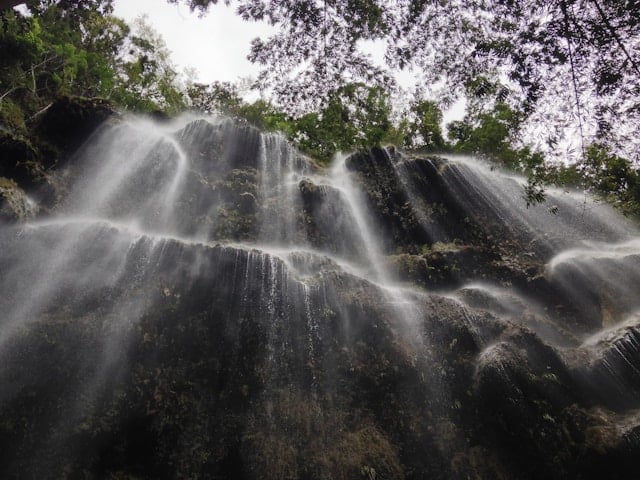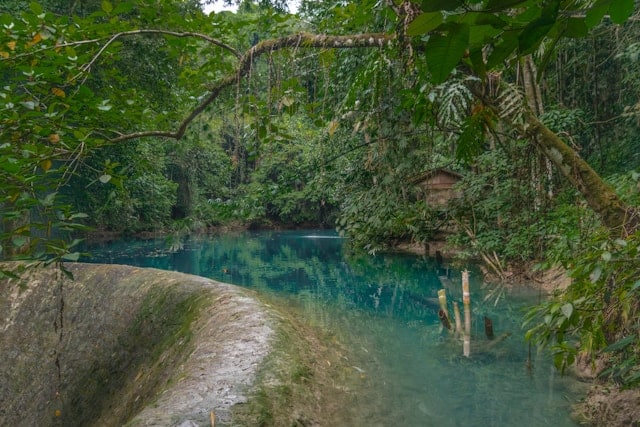It’s no secret that Cebu is a favorite among local and foreign tourists, and it’s easy to see why. This island province offers an irresistible mix of five‑star resorts, centuries‑old heritage, lush landscapes, thrilling adventures, and mouthwatering cuisine, all wrapped in unmistakable local charm. Cebu delivers the experiences you want, no matter if you’re a luxury seeker, history buff, foodie, or adrenaline junkie.
What to do in Cebu: Top 5 Tourist Experiences
In this article, we’ll dive into truly one-of-a-kind experiences that make Cebu unforgettable. From close-up wildlife encounters to offbeat cultural journeys and flavors that define the island, here are carefully selected experiences designed to elevate your next Cebu adventure.
Relax in Style at Luxury Resorts
Staying in a hotel in Cebu City doesn’t just promise unparalleled comfort and genuine care; it’s also an introduction to the island province’s natural beauty and its unique brand of Filipino hospitality.
Enjoy both convenience and privacy when you check into an executive room at Fili Hotel at NUSTAR Cebu, or indulge in ultimate luxury in a villa, complete with a private pool and a deck facing stunning views of the sea.
How about a revitalizing spa day right in your hotel, where you can soothe your senses with a variety of treatments? Or a relaxing dip in the outdoor pool while relishing ocean views and the clear skies? With these five-star amenities, you won’t just find a home away from home, but an exceptional vacation experience all on its own.
See Cebu’s Living Heritage
Cebu’s past isn’t locked in museums. It resides in street corners, ancient plazas, and colorful festival crowds, and those ready to explore can learn its stories by walking through it.

In downtown Cebu City, you’ll find a cluster of historical treasures within easy reach. Start at Magellan’s Cross, a commemoration of the cross planted soon after the arrival of Spanish explorers in 1521. The cross is now encased in a gazebo ,which today is a religious site honoring the foundation of Christian faith in Cebu. From here, your path continues to Fort San Pedro, a coastal defense structure that was initially built in 1565. It is renowned as the oldest and smallest fort in the Philippines.
Then, you should head on toward Basilica del Santo Niño, an awe-inspiring Baroque church that houses the country’s oldest religious artifact. Nearby, Casa Gorordo, the Yap‑Sandiego Ancestral House, and the Cebu Provincial Museum offer intimate glimpses of colonial‑era life through preserved furnishings, period architecture, and curated cultural exhibits. These sites aren’t mere relics; they’re living chapters you walk through one by one, connecting dots of Cebu’s layered story.
Once a year, Cebu erupts in celebration for the Sinulog Festival, a spiritual spectacle mixing devotion and dance. Come January, the city becomes a sea of rhythmic dancers in vibrant costumes, paying homage to the Santo Niño.
And if you time your visit right, you can join processions, embrace local customs, and witness the festival’s remarkable ceremonies. To make the most of Sinulog, book well in advance, prepare for crowds, and bring a spirit of participation and respect as you get ready to immerse yourself in Cebu’s living devotion.
Discover Cebu’s Scenic Wonders
Cebu’s landscape offers a breathtaking variety of natural attractions for those looking to explore the island at a slower pace. From serene waters to majestic peaks, these destinations invite travelers to experience the outdoors in memorable ways.

Begin with Tumalog Falls in Oslob, where a gentle curtain of mist cascades down moss-covered rock walls into a shallow basin, offering a refreshing escape from the heat and the crowds of Cebu’s busier tourist zones. An hour or so away by car and a 30-minute hike afterward, Osmeña Peak, the island’s highest point, rewards hikers with jagged ridges and 360-degree views of the southwestern coastline of Cebu. The relatively short hike offers panoramic photo opportunities at sunrise or sunset.
If you’re seeking tranquility and charm, an island-hopping getaway in Bantayan and Malapascua might be your answer. Bantayan’s white-sand beaches and laid-back coastal towns are ideal for long bike rides and lazy afternoons, while Malapascua’s appeal lies in its crystal-clear waters and remote feel. Together, they showcase Cebu’s softer side: a picturesque escape for nature lovers and serenity seekers.
Dive, Jump, and Trek Through Cebu’s Outdoors
For thrill-seekers, Cebu delivers a full spectrum of adrenaline-pumping experiences. The island offers unforgettable adventures, like plunging into the waters or navigating mountain canyons, set against stunning backdrops.

Canyoneering in Badian is an iconic adventure you shouldn’t miss. Participants gear up for a guided journey through jungle trails, over boulders, and into aquamarine pools. The route leads to Kawasan Falls, a multi-level cascade surrounded by tropical foliage. It’s a pulse-raising yet safe adventure, with local guides ensuring both fun and safety along the way.
Offshore, Moalboal is known for one of the most unique diving and snorkeling experiences in Southeast Asia: the Sardine Run. Just meters from the shoreline, this phenomenon offers you a chance to be engulfed in a shimmering school of fish, all while sea turtles are gliding calmly nearby.
Plan your trip to the Philippines and Southeast Asia:
Taste What Defines Cebu
Cebu is a popular spot among foodies for good reason. The island province’s rich culinary story is written with bold flavors, fervent pride, and centuries of simple yet refined tradition. Beyond meals and quick bites, Cebu’s food culture is about identity.

A visit to the lechon pioneers in towns like Carcar, along with famed city outlets, reveals more than juicy pork and crackling skin. And when you have a taste of Cebu-style lechon, you’re sampling heritage: a dish refined through local spices like lemongrass and citrus, served best alongside rice. Every bite confirms why Cebu’s roasted pig is celebrated nationwide.
Meanwhile, diving into street-food territory on Colon Street delivers surprises beyond your typical snack run. Food carts serve tuslob buwa (a bubbling pork‑offal dip), assorted grilled dishes, and typical Filipino street fare like puto bumbong and balut, among many others. It’s a crash course in explosive flavors, textures, and communal eating—raw, unfiltered, and entirely Cebuano.
Before heading home, visit Taboan Market to stock up on Cebu’s culinary souvenirs, such as smoky pusit (squid), dried fish like danggit, and sweet preserved mangoes. The market is more than a shopping stop. It’s also a sensory immersion in Cebu’s food culture, a perfect finale to your gastronomy journey.
Cebu reveals itself most fully through these standout experiences, with each challenging the limits of relaxation, exploration, and cultural immersion. And when you follow these paths, you don’t just visit Cebu. Instead, you connect with its rhythms, traditions, landscapes, and people in a way that stays long after your journey ends.


